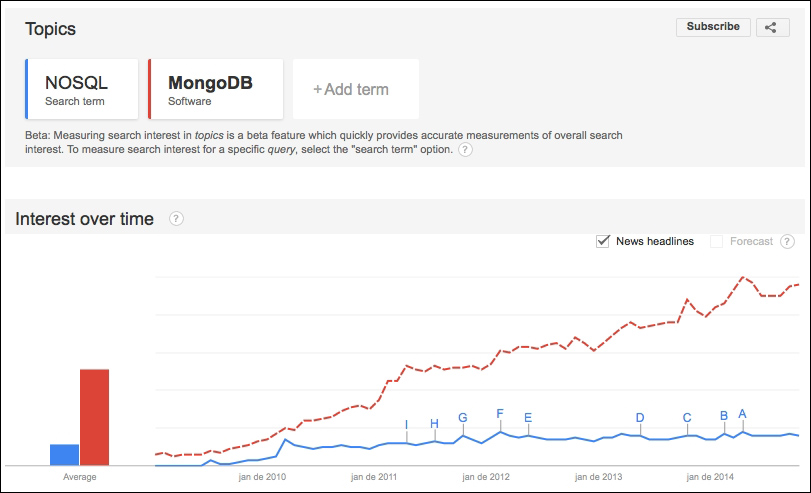Data modeling is a subject that has been discussed for a long time. Hence, various authors on the subject might have different views. Not so long ago, when the main discussions were focused on relational databases, data modeling was part of the process of data discovery and analysis in a domain. It was a holistic vision, where the final goal was to have a robust database able to support any kind of application.
Due to the flexibility of NoSQL databases, data modeling has been an inside out process, where you need to have previously understood an application's needs or performance characteristics to have a good data model at the end.
In this chapter, we will provide a brief history of the data modeling process over the years, showing you important concepts. We are going to cover the following topics:
- The relationship between MongoDB and NoSQL
- Introducing NoSQL
- Database design
If you search on Google for MongoDB, you will find about 10,900,000 results. In a similar manner, if you check Google for NoSQL, no fewer than 13,000,000 results will come to you.
Now, on Google Trends, a tool that shows how often a term is searched relative to all searched terms globally, we can see that the growth of interest in both subjects is quite similar:

Google Trends search comparison between NoSQL and MongoDB terms since 2009
But, what actually exists in this relationship, besides the fact that MongoDB is a NoSQL database?
Since the first open source release in 2009, by a company named 10gen, MongoDB was the choice for many players on the Web and accordingly DB-Engines (http://db-engines.com/en/) became the fourth most popular database, and the most popular NoSQL database system.
10gen converted to MongoDB Inc. on August 27, 2013, showing that all eyes were on MongoDB and its ecosystem. The shift to an open source project was crucial in this change process. Especially, since the community adoption has been tremendous.
According to Dwight Merriman, the current chairman and co-founder of MongoDB:
"Our open source platform has resulted in MongoDB being downloaded 8 million times within the five years since the project has been available—that's an extremely fast pace for community adoption."
Furthermore, MongoDB Inc. launched products and services to support this community and enrich the MongoDB ecosystem. Among them are:
In the same way the NoSQL movement followed the growth of MongoDB, to meet both the challenges and opportunities of what might be referred to as Web 2.0, the NoSQL movement has grown substantially.
